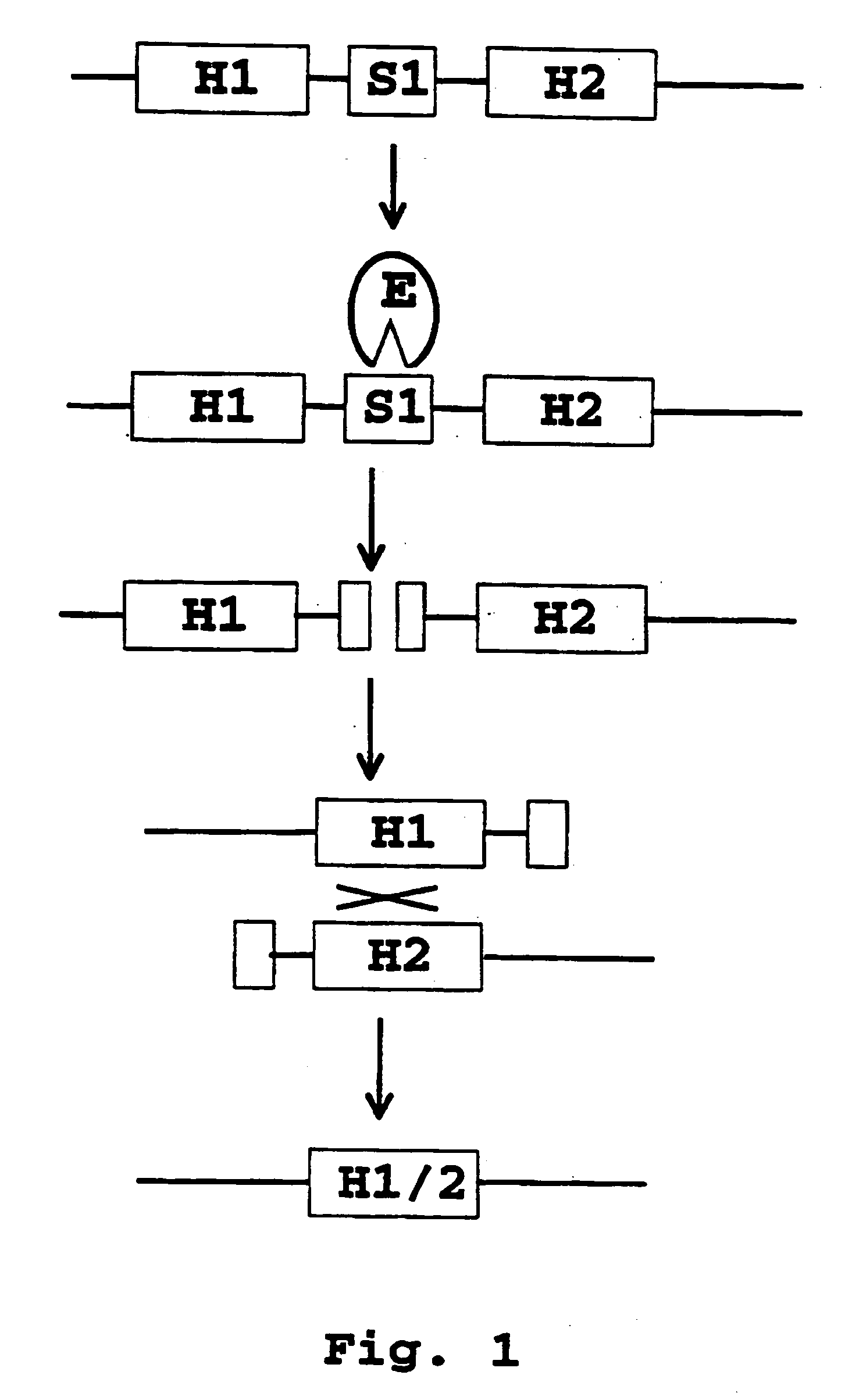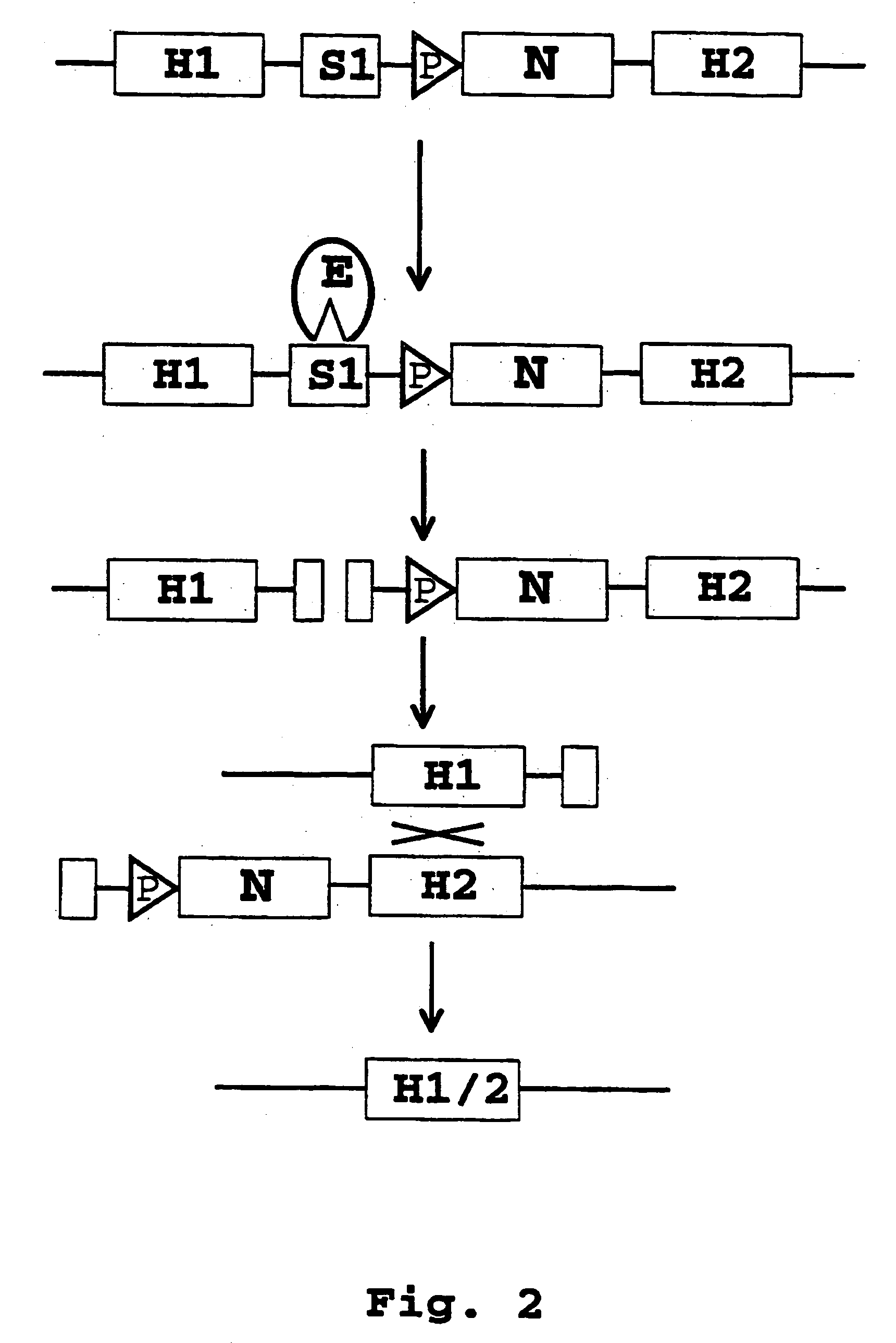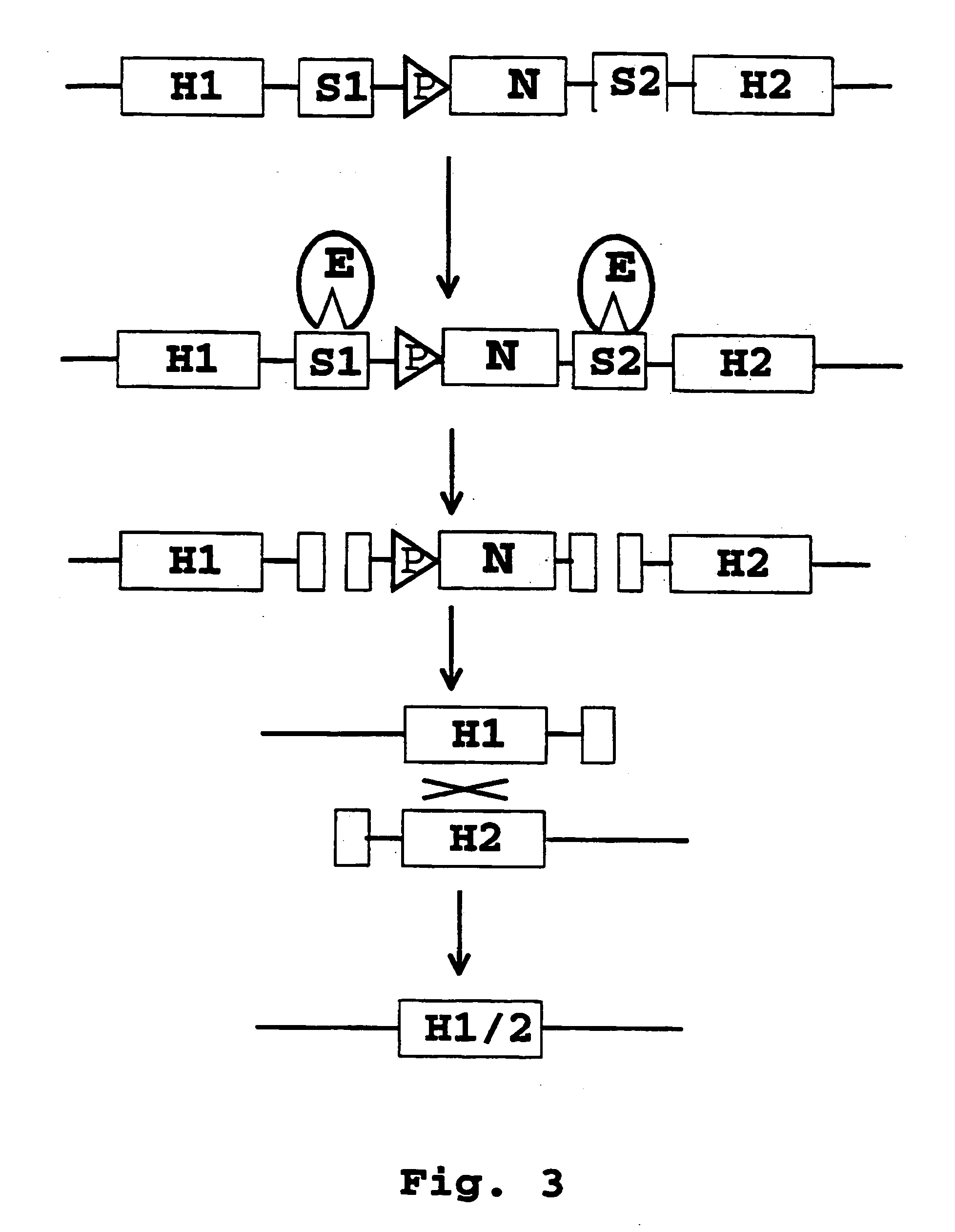Recombination systems and methods for eliminating nucleic acid sequences from the genome of eukaryotic organisms
a technology of eukaryotic organisms and recombination systems, which is applied in the field of recombination systems and methods for eliminating nucleic acid sequences from the genome of eukaryotic organisms, can solve the problems of lack of acceptance, poor efficacy of methods, and difficulty in removing transgenic dna once stably introduced into an organism
- Summary
- Abstract
- Description
- Claims
- Application Information
AI Technical Summary
Benefits of technology
Problems solved by technology
Method used
Image
Examples
example 1
Cloning of the Homing Endonucleases
[0293] The open reading frames (ORFs) of the homing endonucleases I-CreI (Wang J et al. (1997) Nucleic Acids Res 25: 3767-3776), I-ChuI (Cote V et al.(1993) Gene 129:69-76), I-CpaI (Turmel M et al. (1995a) Nucleic Acids Res 23:2519-2525) and I-CpaII (Turmel M et al. (1995b) Mol. Biol. Evol. 12, 533-545) were cloned from the corresponding Chlamydomonas strains.
[0294] To ensure optimal translation of the gene, the ORFs of the endonucleases were linked to the leader sequence of a plant virus (CaMV gene V, as has proven useful in the case of I-SceI; Puchta H (1993) Nucl Acids Res 21:5034-5040). Also, a nuclear localization sequence (NLS2; SEQ ID NO: 30) was placed in front of the ORFs in order to efficiently transport the protein to the intended site of action. The two elements (leader sequence and nuclear localization sequence) were introduced via PCR by means of the oligonucleotide primers used.
[0295] To isolate the open reading frames (ORFs) of t...
example 2
Generation of the Construct pGU.I.USB
[0306] The plasmid pGU.US (Tinland B et al. (1994) Proc. Natl. Acad. Sci. USA 91:8000-8004) was used for constructing the recombination substrates. Within the T-DNA region, the plasmid contain two overlapping halves of the β-glucuronidase (GUS) gene with a 557 bp overlap. A hygromycin gene is integrated in a unique XbaI cleavage site between the GUS sequences.
[0307] In a first step, the BAR gene together with promotor and terminator sequences was excised from the vector pRC (Puchta H et al. (1996) Proc Natl Acad Sci USA 93:5055-5060) in the form of an isolated HindIII fragment, separated from the vector sequence via agarose gel electrophoresis, excised from the gel, isolated with the aid of the QIAquickr Gel Extraction Kit (Qiagen, Hilden, Germany) and thereafter inserted into the unique HindIII cleavage site of pGU.US. To this end, the vector pGU.US was previously cut with HindIII and dephosphorylated with alkaline phosphatase (calf intestinal...
example 3
Plant Transformation with pGU.I.USB
[0313]Nicotiana tabacum L. cv. Petite Havana Line SR1 seedlings were transformed with the agrobacterial strain C58, which contained the binary vector pGU.C.USB.
[0314] To this end, seeds were placed on moistened filter paper under sterile conditions and the seedlings were harvested after 2 weeks, all as described by Puchta H. (1999) Methods Mol Biol 113: 447-451 (25° C., 16 hours light / 8 hours dark rhythm).
[0315] For the inoculation, the agrobacteral strain containing the binary transformation plasmid was first grown overnight in a shake culture at 28° C. in YEB medium. Then, the agrobacterial suspension was centrifuged for 10 minutes at 15.000 g and the cells were taken up in 10 mM MgSO4 so that the final optical density of the suspension had a value of approximately 0.5. In a reaction vessel, the seedlings were then placed into the bacterial solution under sterile conditions and a vacuum of 0.15 at was applied in a sterile desiccator. After 10 ...
PUM
| Property | Measurement | Unit |
|---|---|---|
| total volume | aaaaa | aaaaa |
| pH | aaaaa | aaaaa |
| optical density | aaaaa | aaaaa |
Abstract
Description
Claims
Application Information
 Login to View More
Login to View More - R&D
- Intellectual Property
- Life Sciences
- Materials
- Tech Scout
- Unparalleled Data Quality
- Higher Quality Content
- 60% Fewer Hallucinations
Browse by: Latest US Patents, China's latest patents, Technical Efficacy Thesaurus, Application Domain, Technology Topic, Popular Technical Reports.
© 2025 PatSnap. All rights reserved.Legal|Privacy policy|Modern Slavery Act Transparency Statement|Sitemap|About US| Contact US: help@patsnap.com



